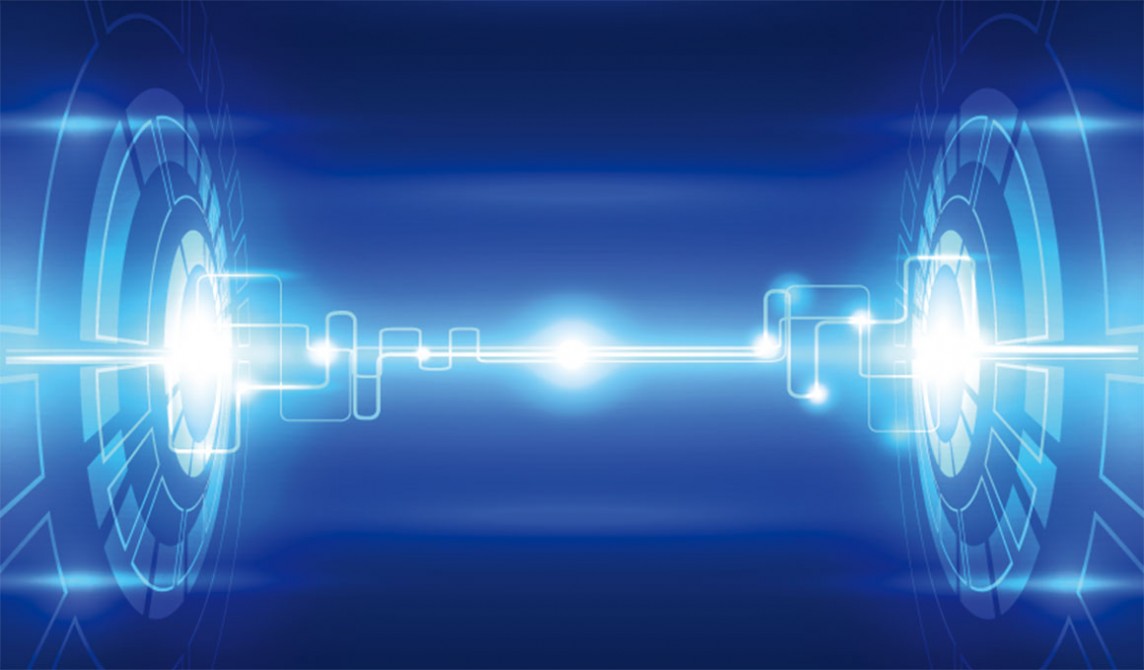Pulse charge/ discharge is actually a kind of periodic current square wave. It’s well-known for Lead-acid applications, and numerous researches and practices have proven that both the charging efficiency as well as cycle life can be significantly improved using pulse function. Pulse charge/ discharge is also widely used to assess battery characteristics by observing voltage change in pulse duration. Moreover, pulse discharge can be used to simulate the loading of DC power device, such as camera flash or mobile phone communication load. Among all current pulse charge/ discharge tests, the Intel Turbo Boost and the GSM are the two most common industry testing patterns.
Intel Turbo Boost
Intel Turbo Boost is the accelerated test for battery-powered devices with Intel Turbo Boost Technology built-in. The following are the steps to conduct the test:
- Step 1 : Simulate Turbo Boost loading through periodically pulse discharge of the battery, and record its capacity when the voltage reaches its minimum threshold (2.8V). There are two typical modes for periodically pulse discharge: 4C discharge pulse, and 2C discharge pulse.
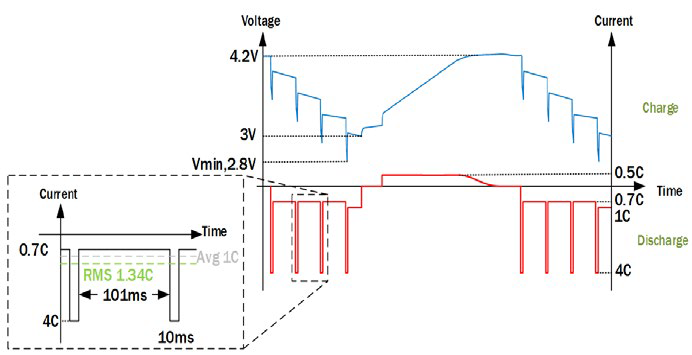
Figure 1 4C Discharge Pulse
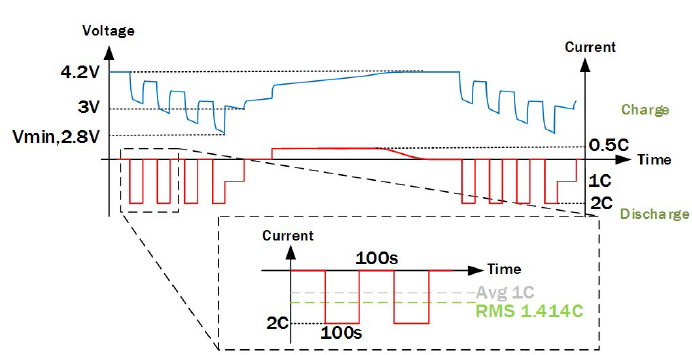
Figure 2 2C Discharge Pulse
- Step 2 : Discharge the battery to 3V with 1C
- Step 3 : Rest for 20 minutes
- Step 4 : Charge the battery to 4.2V with 0.5C under CC-CV mode
- Step 5 : Rest for 20 minutes, and then repeat the cycle
GSM
GSM is the most popular 2nd Generation telecom technology, and GSM pulse discharge is used to simulate the power loading during voice communications.
| GSM | |
| Imax | 1.34A |
| T1 | 550μs |
| Imin | 0.164A |
| T2 | 4050μs |
| Slew Rate | 1.6A/28μs |
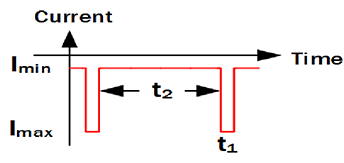
Figure 3 GSM Current Wave Form
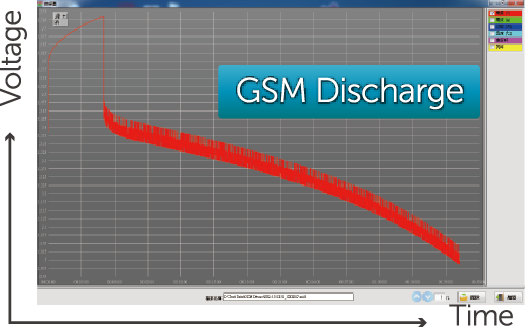
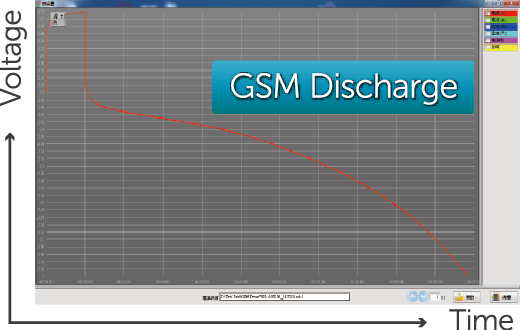
Figure 4 Testing Figures Obtained Using GBT 1000 Series
While evaluating pulse current wave form, rising time, falling time, overshoot and undershoot are four critical indicators (see figure 5). For optimized pulse functions, all indicators should be close to zero. However, in real-world practice, due to bandwidth limitation of control systems, the wave form gets affected and then distorted easily. To deliver the most accurate testing patterns, the Chen Tech solution minimizes rising and falling time, without activating overshoot and undershoot. The minimum rising/ falling time for current under 5A is less than 100μS, and for current under 20A is less than 300μS.
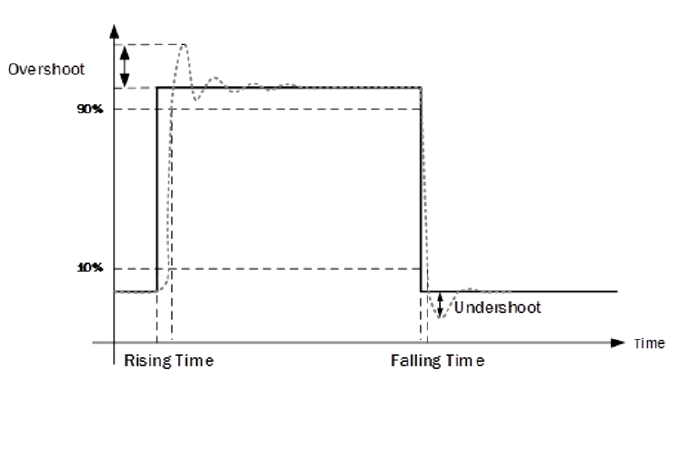
Figure 5 Transient Waveform
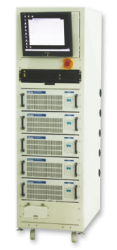
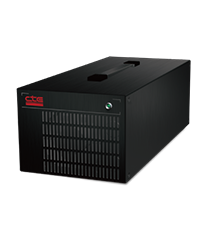
Chen Tech products, offer two levels of pulse charge/ discharge capabilities: 100Hz, 2-phased pulse charge/ discharge available on the MCL2 Series and 2000Hz, 8-phased pulse charge/discharge available on the GBT 1000 Series.
| MCL2 Series | GBT 1000 Series | |
| Phase | 2 | 8* |
| Max. Pulse Width | 60S | 60S |
| Min. Pulse Width | 10mS | 500μS |
| Time Resolution | 1ms | 50μS |
| Compatible Pulse Standard | Intel Turbo Boost* | Intel Turbo Boost, GSM, PWM* |
*Accept customized request
